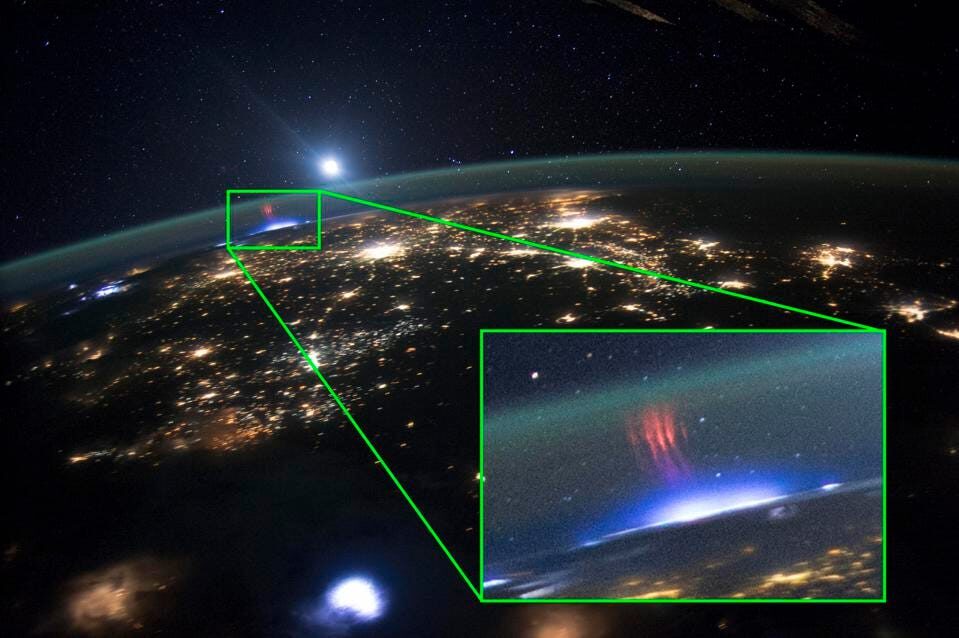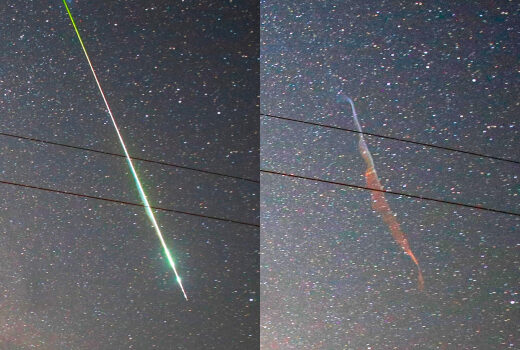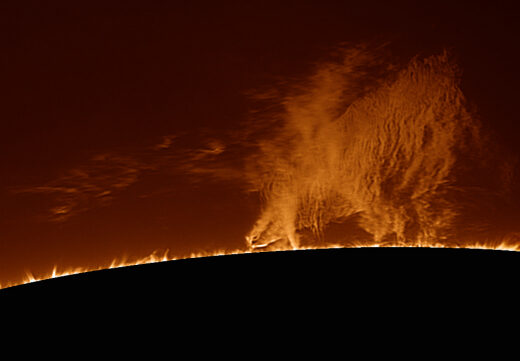
Rain. Clouds. Thunder. The stratosphere has none of those things. Weather up there is pretty dull. Except when the lightning starts....
Researchers call them "blue jets." The elusive discharges leap into the stratosphere from thunderstorms far below. They are rarely seen, but storm chaser Rob Neep was able to capture some over Sonora, Mexico, on August 3rd:
"I couldn't believe my eyes," says Neep, a former TV photojournalist. "I was actually looking for sprites when the jets appeared. They were definitely visible to the naked eye, both my cousin and I observed them."
Oscar van der Velde of the Lightning Research Group at the Universitat Politècnica de Catalunya watched Neep's video and says it is "Excellent-perhaps the best example of classic blue jets we've seen in a long time!"
First recorded by cameras on the space shuttle in 1989, blue jets are part of a growing menagerie of transient luminous events (TLEs) in the upper atmosphere. They appear alongside sprites, ELVES, and other lightning-like forms. Blue jets, however, seem to be more elusive than the others, often frustrating photographers who try to catch them.
Comment: Rather than just being due to the advent of new technologies, it's likely that these events are not only increasing in frequency but also in intensity thus making them visible more often and to the naked eye. The driver behind this is likely our planet's twin Sun, Nemesis, changing the electrical nature of our solar system and that is visible in phenomena on our planet; this is all explained in fascinating detail by Pierre Lescaudron & Laura Knight-Jadczyk in their book Earth Changes and the Human Cosmic Connection :
Another feature of the electric model of the Universe we've covered is how a Nemesis-induced grounding of the Sun weakens the E-field between the Earth's surface and its ionosphere (the 'atmospheric E-field').
"We're not sure why ground-based observers see them so rarely," says van der Velde. "It might have something to do with their blue color. Earth's atmosphere naturally scatters blue light, which makes them harder to see. Neep's video was taken from a relatively high altitude site (elevation 3500 ft); thin clear air probably helped."
"Not all storms have blue jets," he allows. "Even so, blue jets may be much more common than we think."
In 2018, SpaceX launched Europe's Atmosphere-Space Interactions Monitor (ASIM) to the International Space Station to study TLEs from space. Data from ASIM show that blue jets can leap as high as 170,000 feet above the ground. They're sparked by mysterious "blue bangs"-brilliant blue flashes in the tops of thunderclouds possibly caused by intense turbulence.
It's important to study blue jets because, according to van der Velde, "there can be considerable production of NOx and ozone by these discharges, potentially affecting the chemistry of the atmosphere." Also, some blue jets might rise high enough to touch the ionosphere, forming a new and poorly understood branch of the global electrical circuit.
And on top of everything else, "they're beautiful," says Neep. "I was lucky to catch some."
PERSEID METEOR SMOKE
Photographer James W. Young was watching the sky on Aug. 13th when a fragment of Comet 109P/Swift-Tuttle hit the atmosphere over Oregon traveling 130,000 mph. This is what happened:
"This -6 magnitude Perseid fireball disintegrated in front of my camera and left a smokey trail that lingered for nearly 3 minutes," says Young.
The comet fragment was probably the size of a pebble or, at most, a golf ball. Slicing through the atmosphere, its surface rapidly ablated, vaporizing to form a trail of dust-sized specks and molten microdroplets almost 30 km long. As Young watched, the "Perseid smoke" diffused into the mesosphere where, one day, it might catch a wisp of water vapor and turn into a noctilucent cloud.
Comment: Note that just a few days ago, there was a rare Perseid meteor outburst whose source was, as of yet, unidentified.
FARSIDE EXPLOSION
Yesterday, Aug. 15th (0508 UT), a gigantic filament of magnetism erupted from the farside of the sun: movie. SOHO saw a CME fly away from the blast site, but it will not hit Earth. The explosion is interesting because it signals the presence of an active region on the farside of the sun, which could turn to face us later this week. Solar Flare alerts: SMS Text.
Comment: Luckily for us, the CME was not Earth facing, because it was reported earlier this month that even weak CME's are leading to unusual disruption on our planet. This is likely related to that mentioned above; Earth's magnetic field is weakening because of grounding effect of Nemesis on our Sun. For more on Nemesis, check out this SOTT exclusive: Sott Exclusive: Nemesis, not 'Nibiru' - Clarifying mainstream reports about 'a large ninth planet' that periodically sends comets our way
GIANT SOLAR PROMINENCE
For the 3rd day in a row, a fiery prominence is dancing along the sun's northeastern limb. The shapeshifting structure has grown taller each day. Today, says photographer Maximilian Teodorescu, "it looks like a ghost rider on a horse."
A really, really big horse. It's almost 10 times taller than Earth and 15 times as wide. These dimensions make it an easy target for backyard solar telescopes.
Solar prominences are clouds of hydrogen gas held up by magnetic fields. The dynamics of this one suggest it is unstable. The next photo of this prominence, whoever takes it, might capture an explosion.





Comment: The signs that a great shift is occurring on our planet, and beyond, is undeniable:
- Volcanoes, Earthquakes And The 3,600 Year Comet Cycle
- Rare recurrent nova outburst visible in constellation Ophiuchus
- HUGE meteor fireball lights up western China's dark morning skies
- 1,000+ earthquakes rattle Yellowstone in July - the most in a single month since 2017
- Stunning iridescent clouds snapped above skies of Siberia's Belukha mountain
- Gigantic jet photographed piercing the sky in China
- Strange but beautiful skies: Noctilucent 'tornado' cloud, auroras, double and twin rainbow plus a midnight rainbow
And check out SOTT radio's: